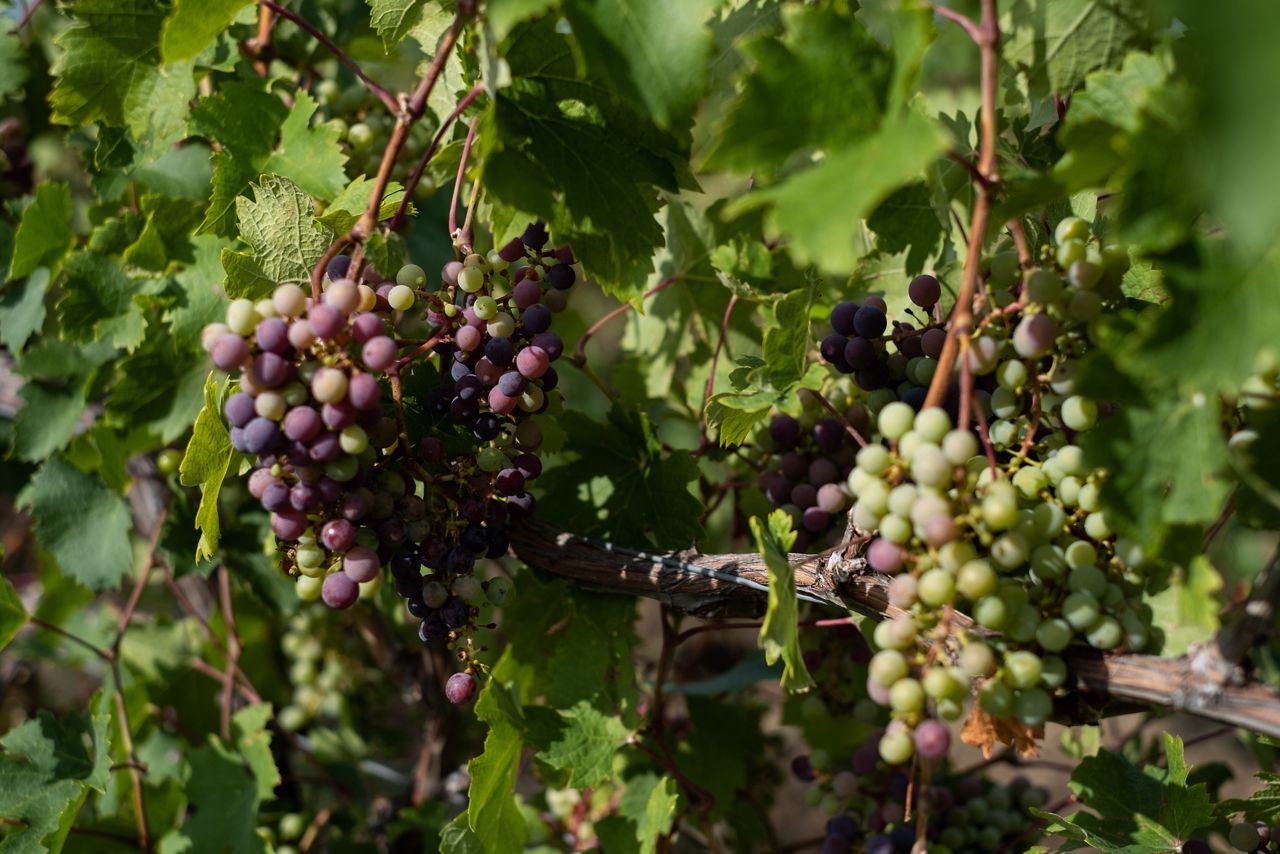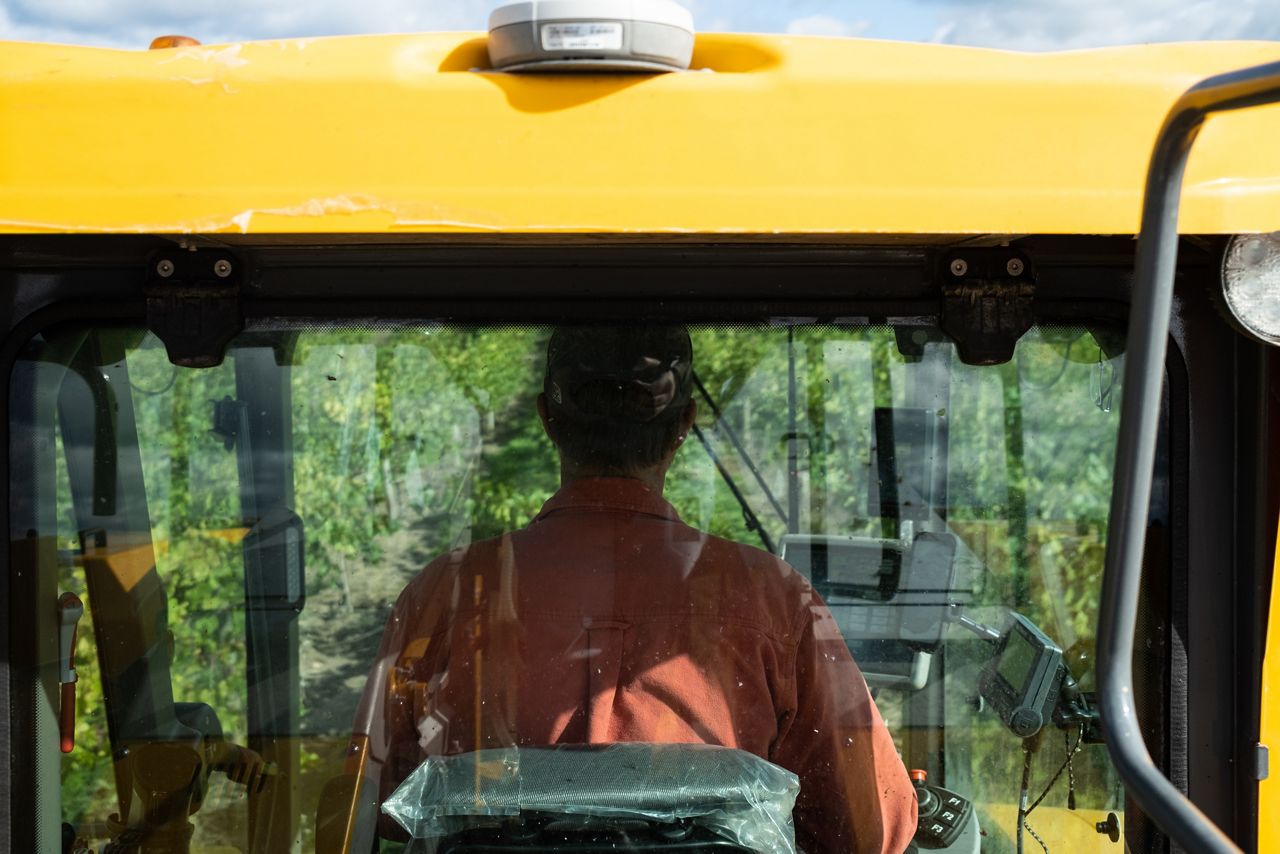Popping from winery to winery in the Finger Lakes on wine-tasting adventures has boomed in popularity, thanks in part to the unique styles produced in one of the country’s most well-known wine regions.
Tracing the beginnings of one of those styles — Reisling — takes you back seven decades and halfway around the world, and it remains one of the most popular of the vinifera varieties.

“In the 1950s, Dr. Konstantin Frank moved over from Odessa, Ukraine, where he was growing a lot of varieties of Riesling and other vinifera varieties,” said Alex Jankowski, marketing and communications manager at Wagner Vineyards. “He came over here as a refugee and heard everyone saying you can’t grow those here. He was like well, we do it there, and it's similar, harsh winters, and not a lot of sunlight.”
Jankowski says Frank brought many techniques with him that have helped wineries in the area grow Riesling in upstate’s stubbornly cold and sunlight-deprived climate. One of those techniques is called hilling, which aims to project the vine’s root system.

“What we do is we will mount the dirt over the graft union in the winter because that soil will insulate the graft union and keep it alive,” said Jankowski.
The graft union is the part of the vine where the root system from American varieties and the vines from the old-world varieties are connected.

“An old-world variety, Riesling, chardonnay, pinot noir, those vines’ old roots are not resistant to a disease called phylloxera,” said Jankowski. “And in the 1700s, it almost wiped out all the vines in the world because it was this pest that lives underneath the ground so it would just destroy the whole vine, however, phylloxera is endemic and native to America, so American grape varieties like Concord, those roots are resistant to it.”
Grape growers now will graft the American root system to the old-world vines, so the roots are resistant to phylloxera keeping the entire plant alive.

Bill Wagner opened Wagner Vineyards Estate Winery in 1979. He was a third-generation grape grower and after the New York Farm Winery Act was passed in 1976, he decided to make their family grapes into wine.
“Ever since we opened, we have been what's called 100% estate bottled,” said Jankowski. “What that means is all of the grapes that go into the wine that we make are grown right here on our farm.”

Currently, Wagner Vineyards farms 240 acres of grapes, 62 of which are Riesling.
Kathy LaTour, sommelier and Banfi Vintners professor of wine education and management at Cornell University, says the Riesling grape is very versatile and can be made into many distinctive styles of wine.
“It can be made into a very austere dry style because it has very high acidity, and it can be extremely dry, and for some pallets it might be off-putting,” said LaTour. “It can also be made into a semi-sweet and very sweet style, so there is more residual sugar which balances out the acidity. And it can be made in an ice-wine type style where the grapes are frozen on the vine, it's very expensive to make and it can be very sweet, or it can also be made in a sparkling style, so it runs the gamut.”

Wagner Vineyards sells all these styles of Riseling.
“A Riesling with more sugar leftover is going to have little more tropical characteristics pineapple mango, versus one that doesn't have any residual sugar left,” said Jankowski. “A dry Riesling is going to have more acid presence and then more citrus, lemon, lime characteristics, it's going to be a little more tart.”
LaTour said Riesling grapes grow well in this region due to the colder climate.

“It's an aromatic grape, some grapes that are more neutral like chardonnay, so they don't require as long for the ripening process, but Riesling, because it’s an aromatic it prefers a longer, cooler time to ripen,” said LaTour. “And as it ripens, it develops these nice flowery and citrus, mandarin orange, different aspects to the aroma of the grape and because we are cooler than California, it does well in this part of the world.”

Jankowski says it is important to have an open mind when you visit wineries because among certain varieties there are many different things that can happen in terms of how it’s grown in certain regions, and then what happens in the cellar with oak usage and other factors.
“A lot of times people will be like, ‘Oh, I’ve always hated Chardonnay.’ And I'm like, well, maybe you just haven't had the right type of chardonnay,” said Jankowski.



